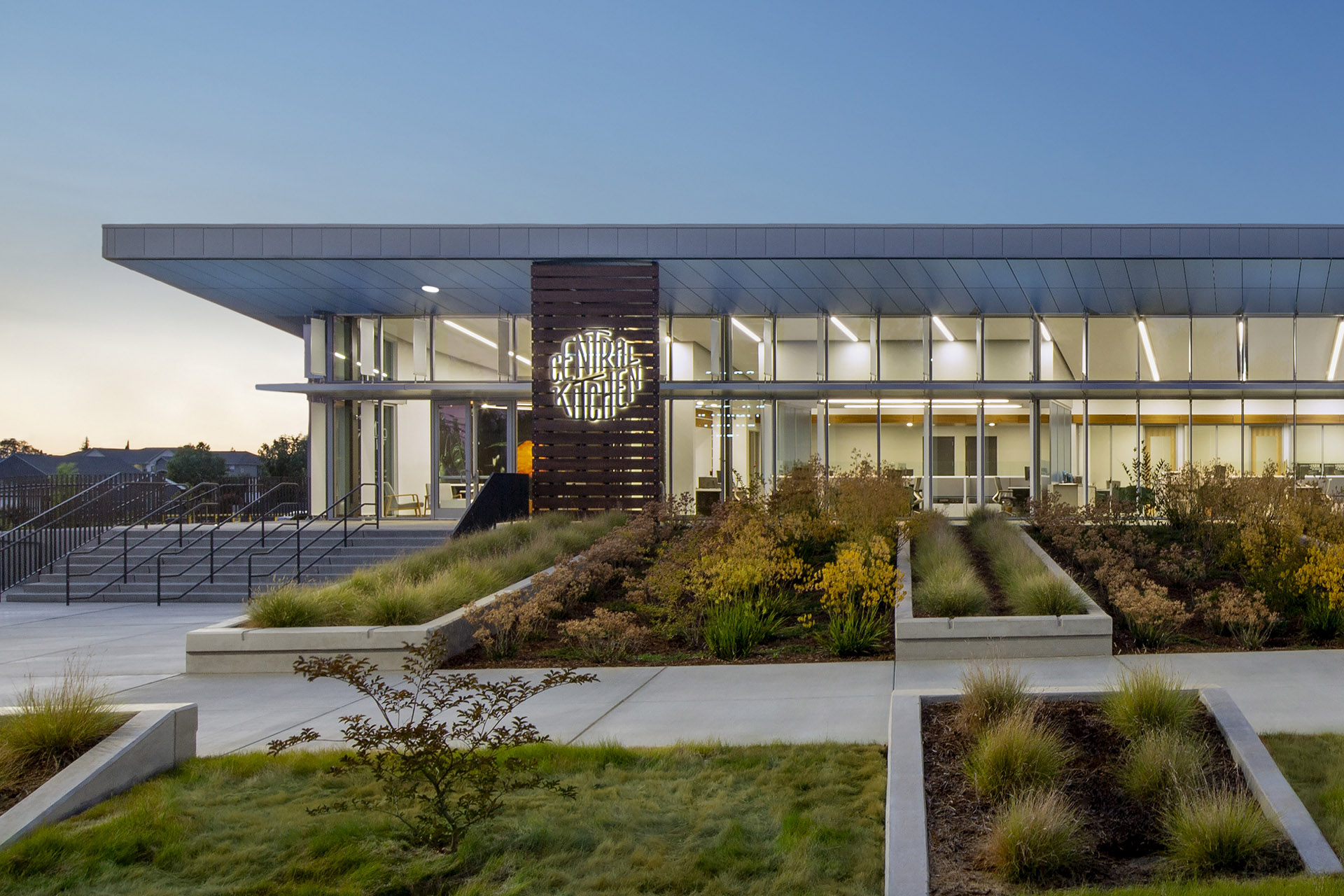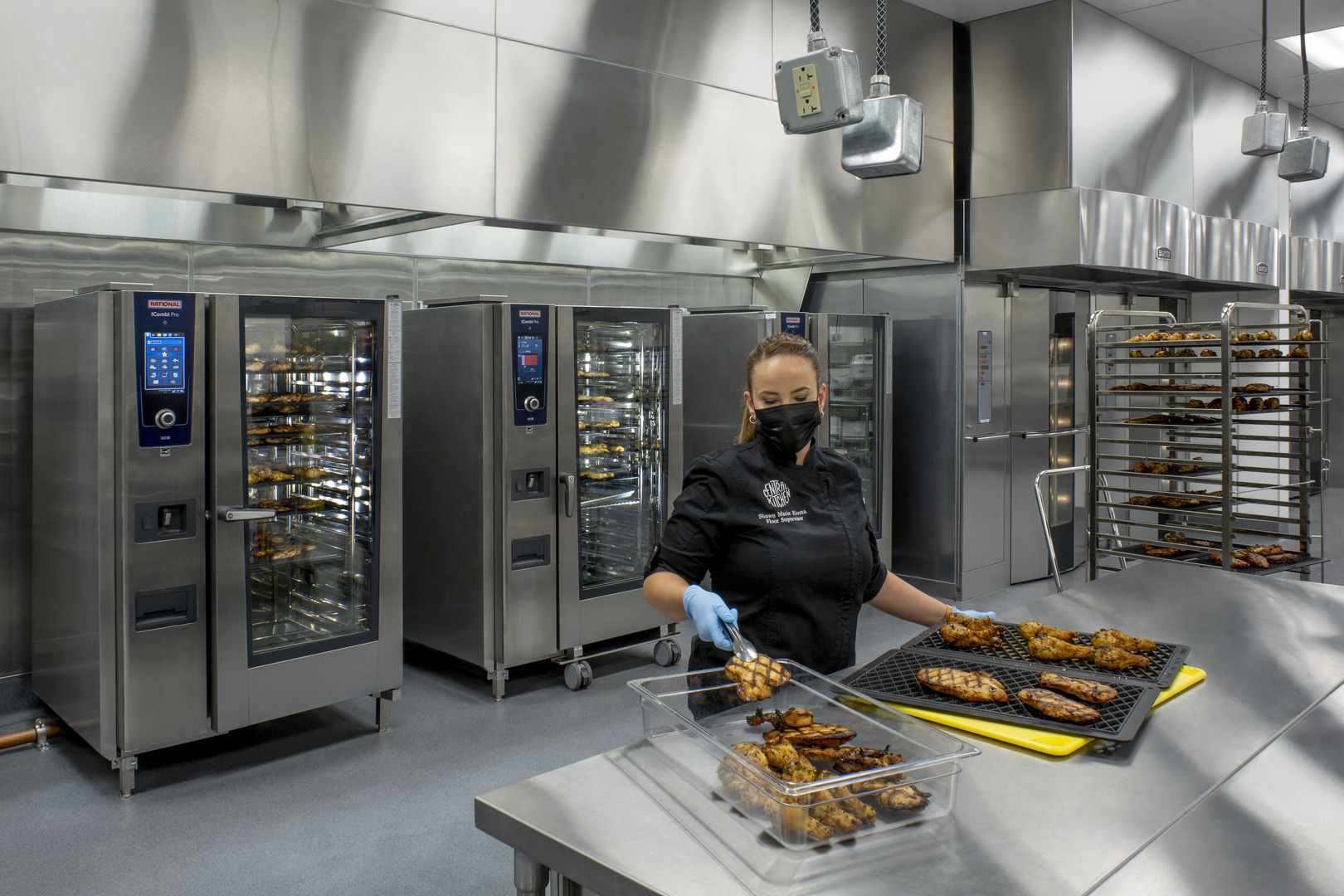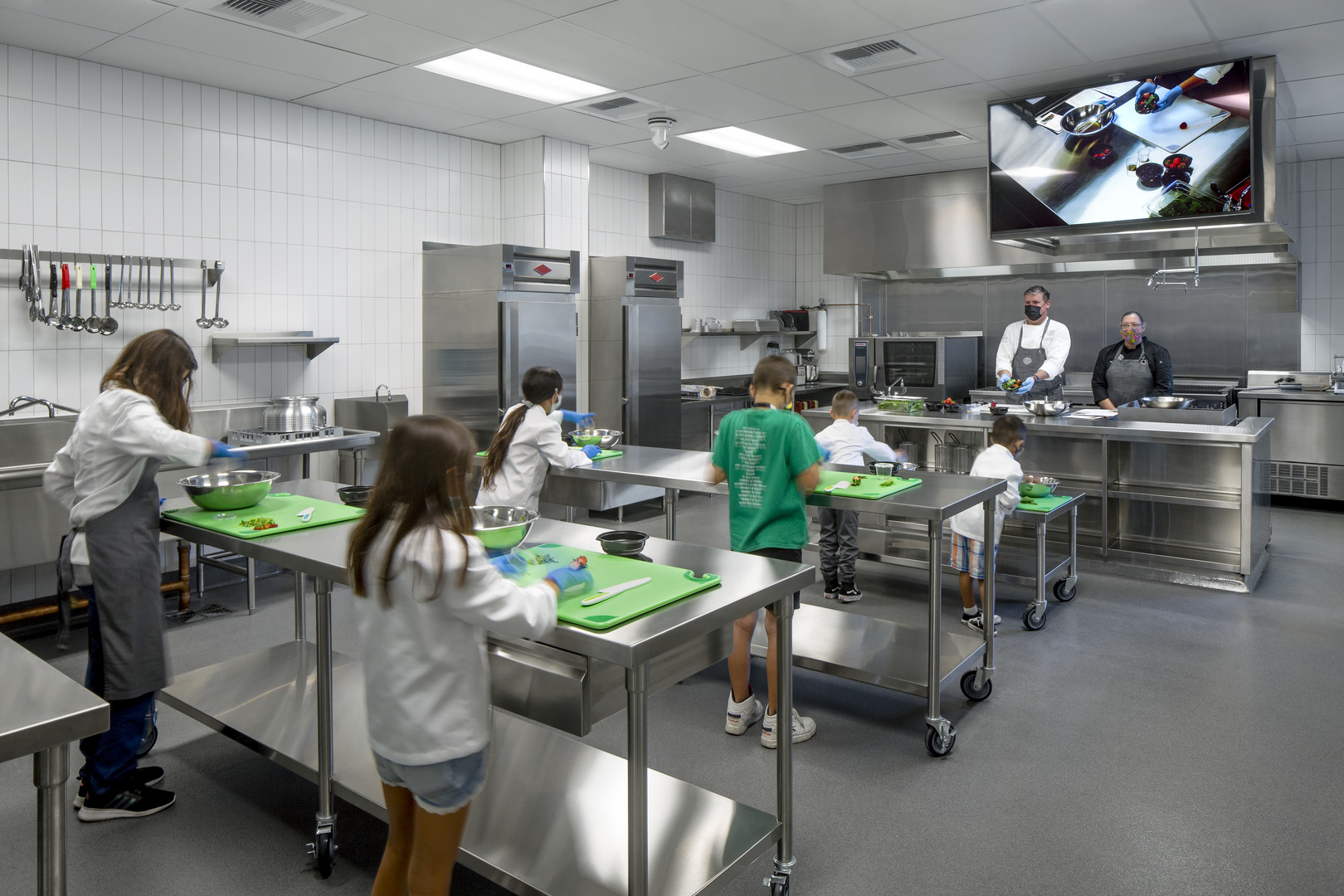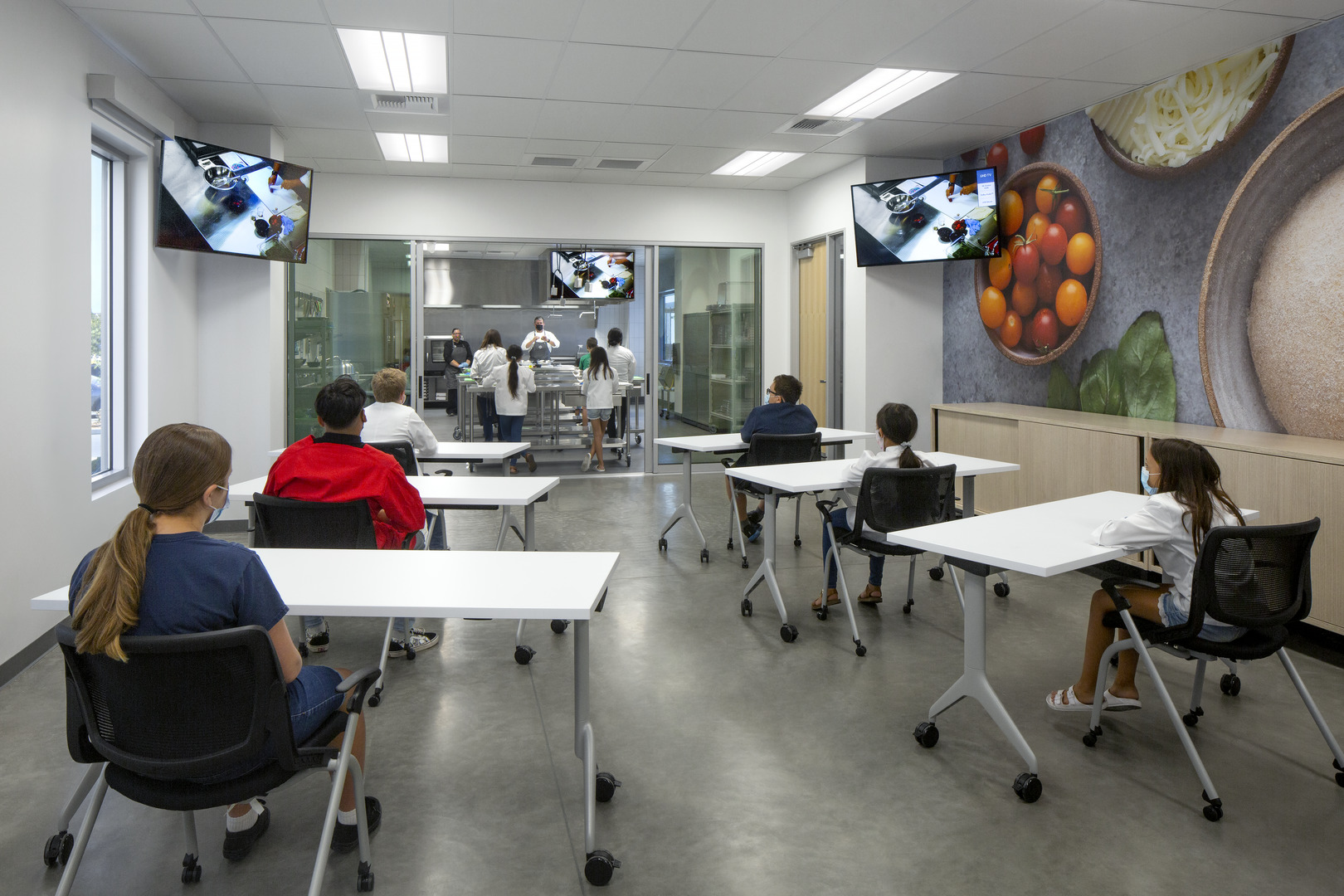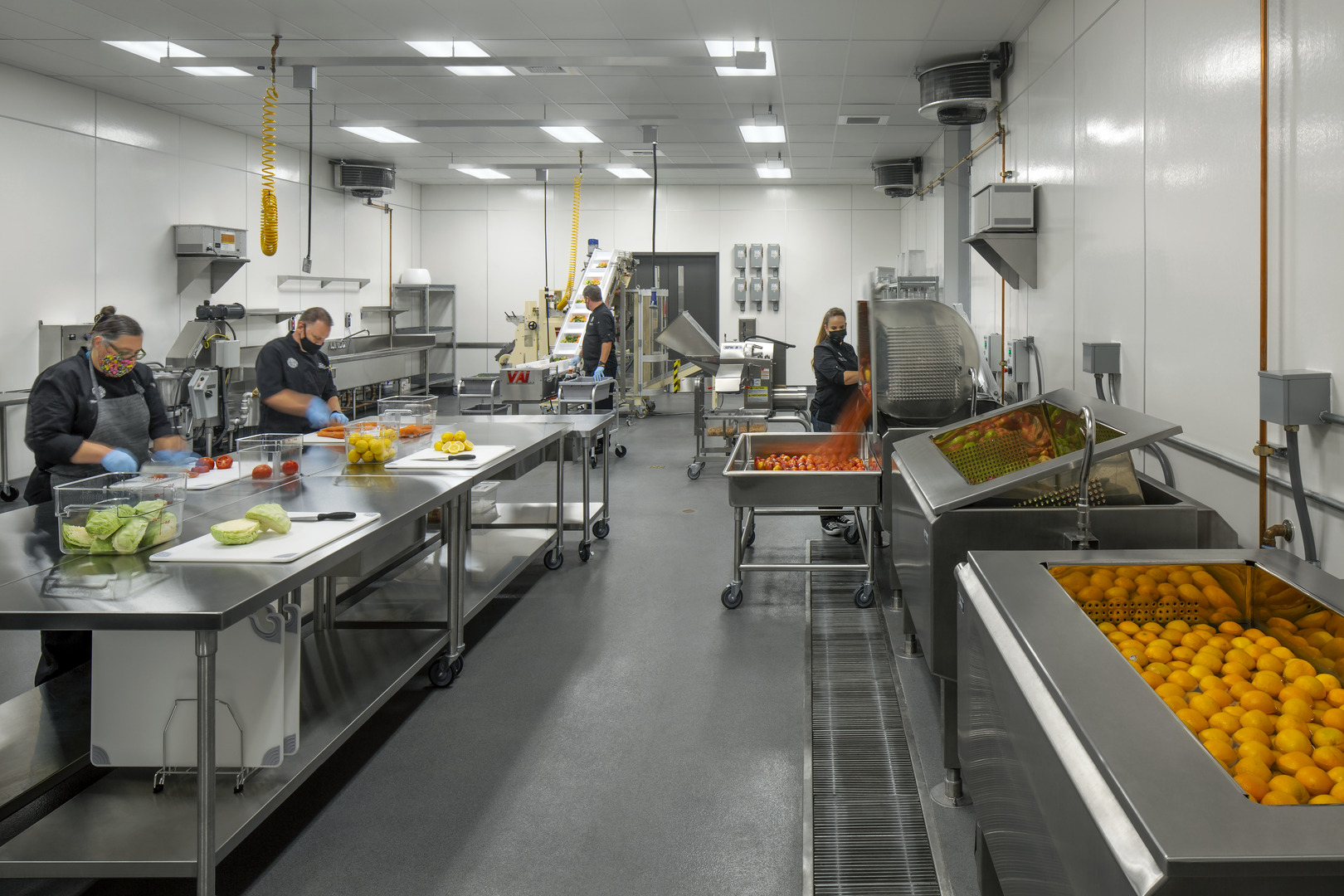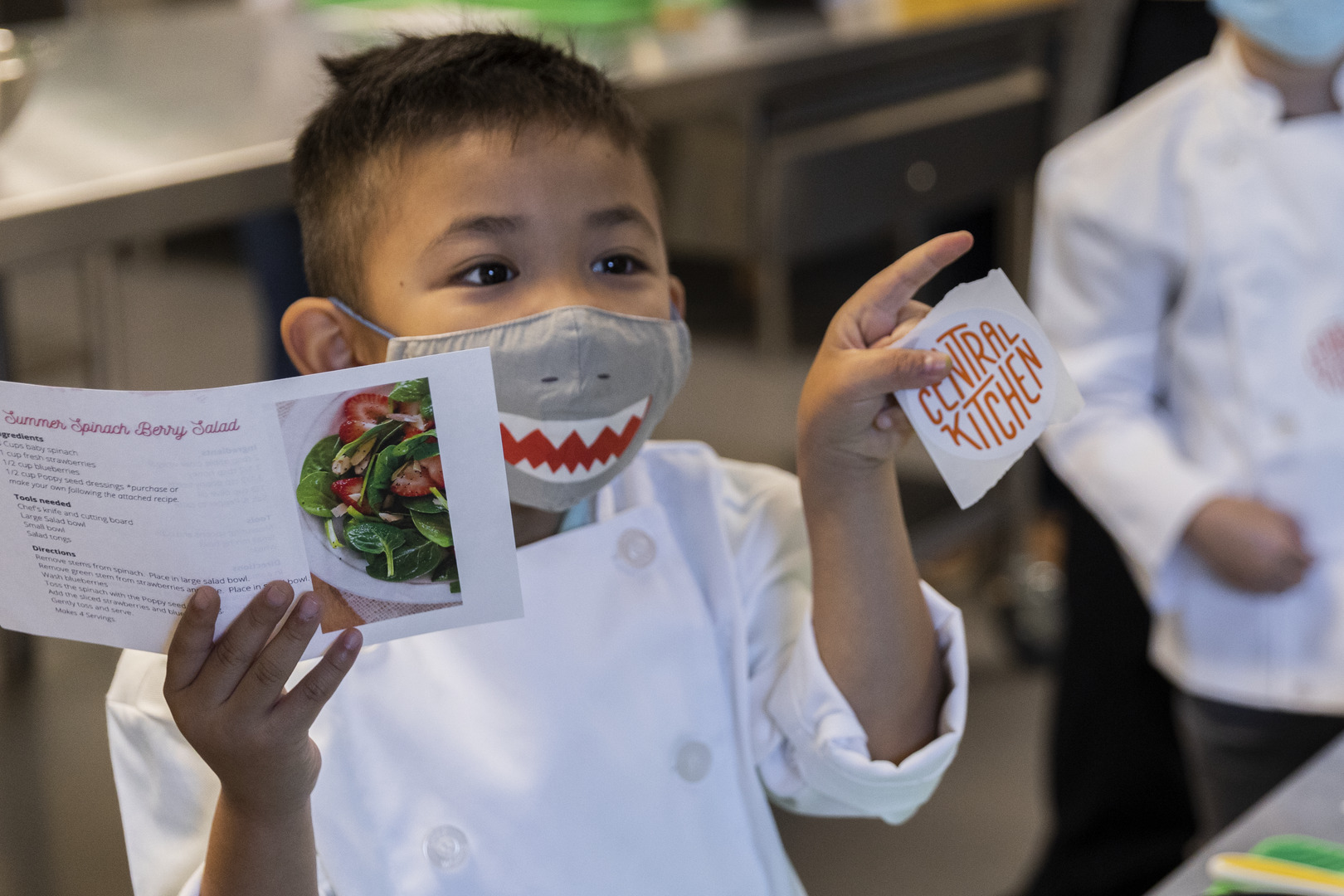When Sacramento City Unified School District challenged HMC to design its new Central Kitchen project that would produce healthy, farm-to-fork meals for its students, we saw it as an opportunity to be part of something that would forever change the role of food in the lives of these students and their families.
While the pandemic has certainly exacerbated the food insecurity crisis, it was in 2012 when Sacramento voters—who understood the importance and need to improve the health and safety of their children—passed Measure R to allow the district to take these important steps. The Sacramento City Unified Board of Education approved the location and funding for The Central Kitchen in 2017 and—along with HMC—engaged with the local community through stakeholder meetings to solicit feedback, keep them informed about the project’s status, and explain the next steps. The district also collaborated with several community partners to make the project and the vision of connecting the farm to every fork in Sacramento a reality. Partners included the Food Literacy Center, Valley Vision, Health Education Council, Soil Born Farms, the Center for Land-Based Learning, and No Kid Hungry.
The $70 million project was maximized using three separate district properties: the existing transportation facility, an existing central warehouse, and a new adjacent property purchased for the project. The transportation facility was moved to the newly purchased property, allowing the 50,000 SF warehouse to be fully renovated to house nutrition services administration and support Central Kitchen bulk storage functions. With a modernized kitchen, the new facility serves over 60,000 meals per day at full capacity, serving students in grades K-12. In the kitchen, professional chefs convert the bulk product into wholesome packaged meals on-site for the approximately 40,000 students throughout the district’s 90 school sites.
While the project is ultimately designed to churn out thousands of nutritious meals to feed the community, it’s undeniably rooted in childhood education. Research shows that healthy eating translates to better performance in the classroom. The building is also a learning lab, featuring a test kitchen for student field trips, taste testing, and remote cooking classes that can be broadcast to schools throughout the district and through its cable TV channels.
The new high-performance facility is near the district’s center to reduce transportation costs and waste. Bicycle- and pedestrian-friendly paths support the flow of California State University Sacramento students from off-site housing to the campus. In addition to being a renewable resource as an adaptive reuse and renovation project, HMC also incorporated passive sustainable strategies, including north and south-facing windows that take advantage of daylight in the work and break spaces. The district also prepared and received grants for EV charging stations for up to 14 buses at the transportation facility. The building’s interior tells the story of its surrounding community with wall-to-wall imagery of California farms, reclaimed wood, and beams from school sites, including wooden bleachers formerly located nearby John F. Kennedy. Jr. High School.
With its proximity to local farms, Sacramento is at the forefront of fresh, seasonal cuisine sourced right from the city’s backyard. The new Central Kitchen uses only produce sourced from these farms. Not only does that improve students’ health, but it also boosts the local and regional economy. While the farm-to-fork movement has become somewhat of a trend around the U.S. in recent years, Sacramento has always been this way. So, it’s no surprise they are known as the farm-to-fork capital of the world.
While COVID-19 has forced school districts and children to teach and learn online, The Central Kitchen has continued providing for its community. Sacramento City Unified has been offering curbside meal services via drive-through or walk-up services at no cost to children at 44 school sites. Since March 2020, when school closures began due to the pandemic, the district has distributed millions of meals to its students, including shelf-stable items, fresh produce, and frozen items to be reheated at home.
This realization of a community-led effort to partner with local farmers and professional chefs to provide families with healthy, wholesome foods from scratch is proof of the difference we can make together to overcome the food insecurity crisis and reinforce our momentum towards safe, resilient learning environments that enhance student success, wellness, and community.
The project was recently featured on KCRA Channel 3 & My58 Television News in Sacramento in a segment on how Sac City Unified is working to keep students and families fed throughout the summer.
For more on Sac City’s Central Kitchen, please view our highlights video below.
